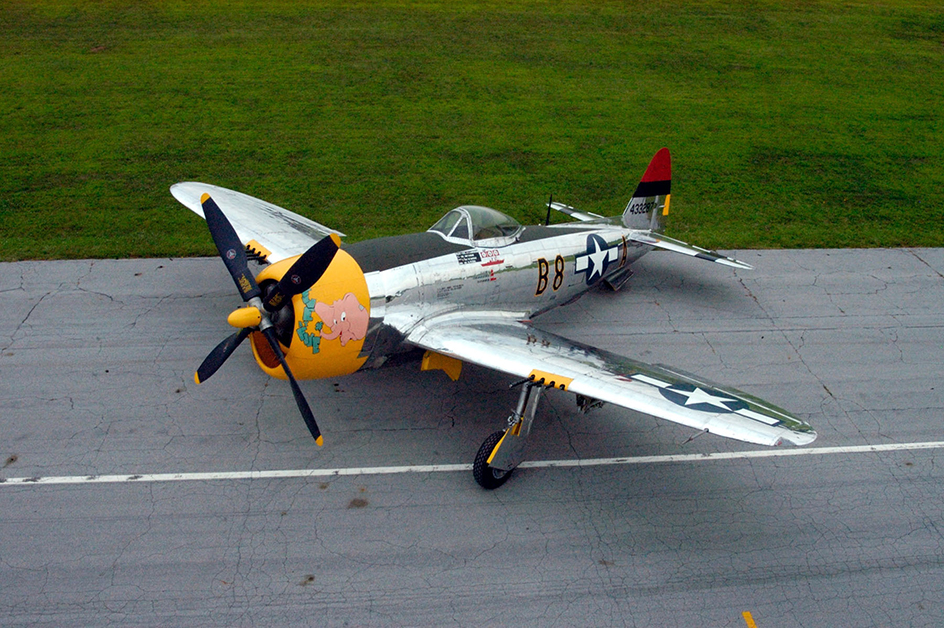P-47 Thunderbolt was a military airplane used by the United States and its allies during World War II (1939-1945). The P-47 was a single-engine fighter (fast-flying airplane with weapons) designed by the Republic Aviation Corporation. At that time, P was the U.S. Army’s designation for a pursuit (fighter) plane. The P-47 was famous for its ruggedness, firepower, and speed. It was also the largest and heaviest single-engine fighter plane of World War II. P-47 pilots nicknamed their plane the “jug.”

Most P-47’s carried one pilot and eight heavy machine guns. They also carried rockets or bombs for surface attacks. An engine by the Pratt and Whitney Company gave the plane a top speed of about 430 miles (693 kilometers) per hour. The P-47 had a maximum altitude around 42,000 feet (12,800 meters). Drop tanks (exterior fuel tanks attached beneath the plane’s body) could extend the plane’s range to about 1,100 miles (1,770 kilometers). Thunderbolt pilots sat beneath a glass bubble canopy, which allowed for improved vision.
Republic Aviation Corporation first tested P-47’s in 1941. The fighters entered combat with the U.S. Army Air Forces in early 1943. Their many combat duties included escorting bombers (airplanes used to drop explosives) to and from enemy targets. They also flew combat missions against enemy fighters and German V-1 Flying “Buzz” Bombs . P-47’s fought on every front during World War II.
Throughout the war, P-47 Thunderbolts damaged or destroyed nearly 12,000 enemy aircraft, as well as thousands of locomotives, tanks, and other vehicles. Of the roughly 15,600 P-47’s built, about 3,500 were lost in combat. Most U.S. Air Force Thunderbolts were phased out of active duty by the late 1940’s. Thunderbolts served in many foreign air forces well after World War II.
See also Aircraft, Military ; Fighter plane ; World War II (The air war) .
